Health benefits of dill and what to eat in it
Dill - an annual plant of the Umbelliferae family. Its greens have a pleasant spicy-anise aroma and a unique refreshing taste. In addition to its taste, the plant is famous for its rich chemical composition and wide range of applications.
From the article you will learn the benefits of fresh dill, what they eat in it and how to use it to prolong youth, improve vision and boost immunity.
Chemical composition, vitamins and microelements
This spice contains virtually no calories. But the list of microelements included in the composition is quite extensive. Dill seeds are rich in vitamins A, B1, B2, B3, B6, B9 and minerals such as calcium, iron, magnesium, zinc, etc.
The essential oils of the plant contain phytoncides. These substances help slow down the growth of fungi and bacteria, which helps cleanse the intestinal microflora. The combination of antioxidants, vitamins and dietary fiber reduces bad cholesterol and removes sugar from the blood.
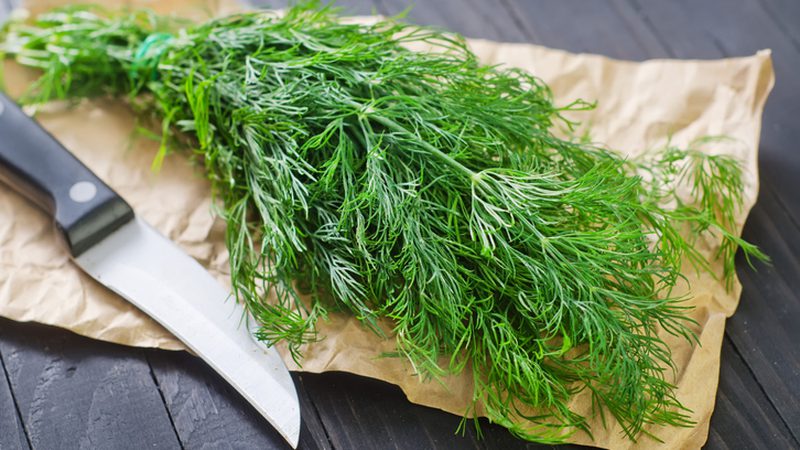
The content of vitamins and minerals in 100 g of dill is indicated in the table.
| Vitamins | Amount, mg | Percentage of daily value, % |
| Fat soluble | ||
| vitamin A | 386 mcg | 42,9 |
| Water soluble | ||
| vitamin C | 85 | 94,4 |
| vitamin B1 | 0,1 | 4,8 |
| vitamin B2 | 0,3 | 22,8 |
| vitamin B3 | 2,8 | 17,5 |
| vitamin B5 | 0,4 | 7,9 |
| vitamin B6 | 0,2 | 14,2 |
| vitamin B9 | 150 mcg | 37,5 |
| Minerals | Amount, mg | Percentage of daily value, % |
| calcium | 208 | 20,8 |
| iron | 6,6 | 65,9 |
| magnesium | 55 | 13,8 |
| phosphorus | 66 | 9,4 |
| potassium | 738 | 15,7 |
| sodium | 61 | 4,7 |
| zinc | 0,9 | 8,3 |
| copper | 0,1 | 16,2 |
| manganese | 1,3 | 55 |
Unique properties of dill
The uniqueness of this plant lies in the fact that it can be used completely, from roots to seeds and bunches of greenery.
Properties and uses of seeds
The plant seeds taste like caraway. They are widely used in cooking and medicine.
Main properties of dill seeds:
- Antimicrobial. Effectively fight bacteria and fungi.
- Antioxidant — these compounds remove free radicals from the body and neutralize carcinogens.
- Anticholesterol. Extract from the seed helps eliminate bad cholesterol and improve the functioning of the cardiovascular system.
- Antispasmodic. Seed extract stabilizes the gastrointestinal tract (GIT), treats flatulence and intestinal disorders.
- Increased levels of the hormone progesterone in women. Helps stabilize the cycle.
- Anticancer. Dill seed extract acts on certain types of tumor cells, inhibiting their growth.
- Antirheumatoid. Thanks to the calcium in their composition, the seeds prevent bone loss due to rheumatoid arthritis.
- Sedative. B vitamins have a complex effect on the normalization of the central nervous system and help improve sleep.
Properties of dill root
The root of the plant is most often used for medicinal purposes as an infusion. It is used for:
- improved digestion;
- increased appetite;
- eliminating flatulence;
- strengthening the heart muscle;
- stimulating effect on the mammary glands during breastfeeding;
- getting rid of edema;
- normalization of blood pressure;
- relieving spasms and dilating blood vessels.
The benefits of greenery
Bunches of the plant are more often than other components used in cooking.They give food an original taste and a light spicy aroma.
When eaten regularly, dill:
- improves digestion;
- normalizes the cycle women;
- increases appetite;
- strengthens the immune system;
- stabilizes blood pressure;
- relieves insomnia;
- increases potency;
- calms the central nervous system;
- removes mucus from the lungs;
- eliminates inflammatory processes in the oral cavity.
In cosmetology, an infusion of dill leaves is used to give the skin a lighter shade and whiten freckles.
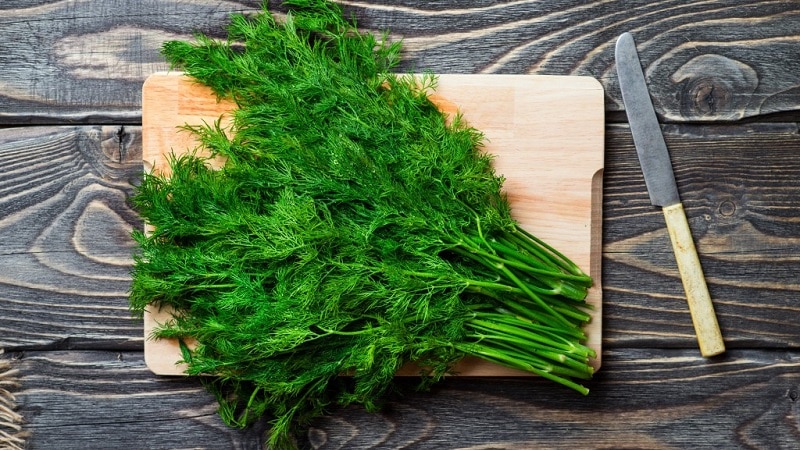
What is healthier - parsley or dill?
Leafy greens are an irreplaceable source of essential oils, vitamins and minerals and other substances necessary for the human body.
The chemical composition of parsley and dill is largely similar. This is due to the almost identical effect of these herbs on the body. In addition to substances similar to dill, parsley contains vitamins E, H and K, as well as the minerals iodine, chlorine and fluorine.
To get the maximum amount of nutrients, you should not stop at one type of greens. Doctors recommend consuming various types of it daily, regardless of the time of year.
Beneficial healing properties
Thanks to its unique chemical composition, dill has a beneficial effect on the body of women, men, the elderly and children.
For women
Dill has a special effect on women's health. With regular use, the following is observed:
- increased libido and improved hormonal processes;
- increasing the effectiveness of diets and weight loss;
- increased milk production during breastfeeding;
- reduction of PMS symptoms and menstrual pain.
In the beauty industry, this fragrant plant is most often used as a natural lightening agent.
For men
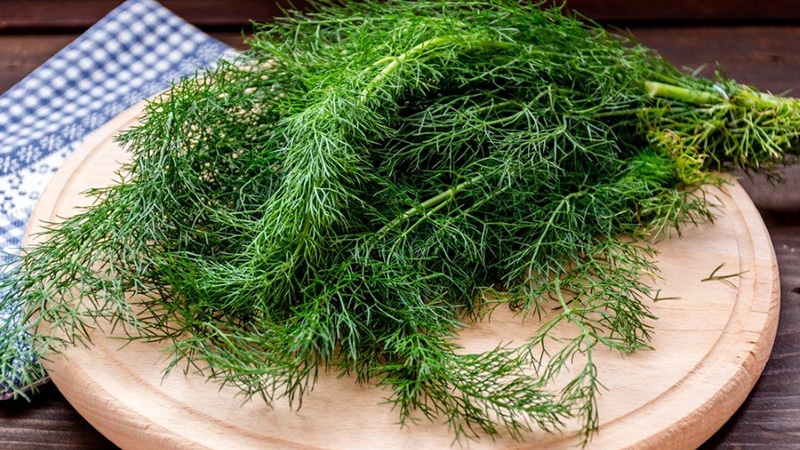
Dill has a vasodilating effect, which causes a rush of blood to the pelvic organs. Also, along with dill, the body receives the vitamins and minerals necessary for muscle tone. As a result, potency is significantly improved.
The plant has anti-inflammatory properties. For this reason, it is recommended to be used as an adjunct to the treatment of diseases of the genitourinary system.
For the elderly
The high calcium content in the greens of the plant helps strengthen bone tissue. The plant's unique combination of vitamins and minerals makes it an effective remedy for the prevention of osteoporosis. This feature of dill is especially relevant for older people.
Just one sprig of dill added to your daily diet is an effective natural remedy for normalizing blood pressure.
For children
Among young mothers, an infusion of dill seeds has found wide use for the treatment of colic and bloating in babies.
In addition, dill:
- improves the child's appetite;
- relieves mild headaches;
- cleanses the child’s body of harmful substances;
- increases immunity;
- improves the outcome of treatment of anemia in a child;
- complements treatment for pyelonephritis and cystitis.
Basic rules and norms of use
The calorie content of fresh dill is about 38 kcal, and 100 g of greens contains the daily requirement of vitamin C. If there are no contraindications, you can, of course, eat a bunch of dill a day, but it is better to distribute it over several dishes.
In what form to use
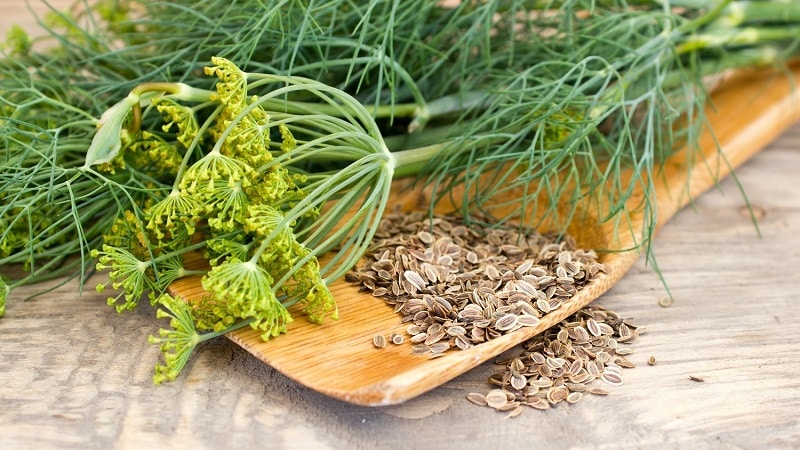
Greens, seeds and even plant roots are used in fresh, dried and heat-treated form.
Fresh herbs
Used for preparing salads, decorating sandwiches and various dishes.
Fresh bunches of herbs are great for:
- for sauces and dressings;
- potato dumplings;
- marinade for kebabs;
- boiled potatoes;
- soups, cabbage soup or fish soup.
Dry
Most often, dried herbs are used to prepare hot dishes: soups, meat, scrambled eggs and omelettes. When dried, dill retains all its beneficial properties and taste.
Juice and decoction
They are used mainly for the treatment and prevention of various diseases of the gastrointestinal tract. To prepare a decoction, most often take 1 tbsp. l. dried dill per 0.5 l. water. It is recommended to leave for at least an hour and drink half a glass about 3 times a day.
Seeds
Dill seed is used in cooking in a similar way to sesame or caraway seeds. They are also used in folk and even traditional medicine.
When used for medicinal and prophylactic purposes, it is recommended to pour the seeds with boiling water and leave for 10-15 minutes. Take on an empty stomach.
Tincture
To prepare the tincture, use fresh dill or its seeds. Most often, the seeds are poured with hot water, less often with vodka. It is possible to use crushed seeds.
Oil extract
Dill essential oils are used in the food industry and cosmetology production. Dried or fresh herbs can also be added to butter and stored in the freezer.
Other
For medicinal purposes, it is possible to use not only the herbs and seeds of dill, but also its root. To obtain a healing decoction, the root is thoroughly washed, crushed, poured with hot water and infused.
Collection and preparation of dill
The final amount of preserved nutrients depends on the correct collection and preparation of greens. It is recommended to collect dill during the budding period. At this time, the greens are the most juicy and elastic.
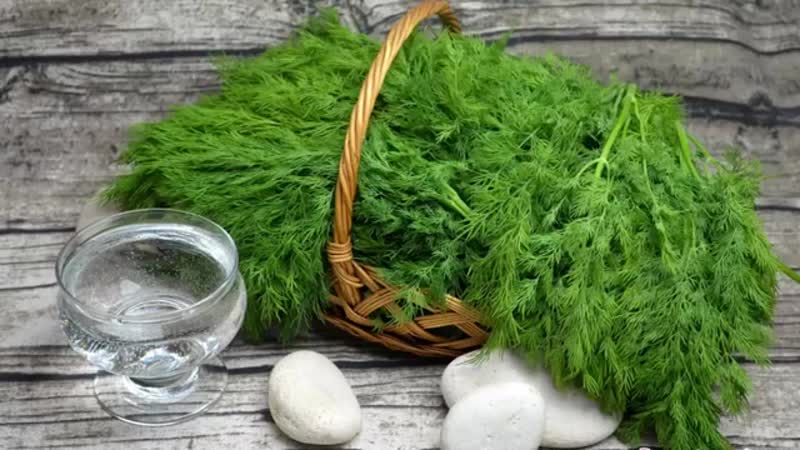
Main harvesting methods:
- freezing;
- drying;
- pickling;
- pickling.
Freezing
When frozen, the maximum amount of vitamins and minerals is preserved.
Before placing dill in the freezer, it is recommended to wash it thoroughly and dry it on a towel. Next, the greens are laid out in a special container or on a tray in a layer of no more than 3 cm. This thickness allows the greens to freeze evenly without losing their taste and attractive appearance. Or the grass is wrapped in thin bunches in foil or plastic wrap.
Another freezing method is cooling in silicone cube molds. The greens are crushed, placed in ice trays and filled with water. And to make spicy butter, butter is thoroughly mixed with chopped herbs and placed in special molds for freezing.
Drying

This method preserves the aroma and taste of the plant well. The downside is that it takes a long time to dry.
To dry dill, you can use special devices such as a dehydrator, electric dryer, oven or microwave. Or leave the prepared greens outdoors.
For a natural drying method, the greens are thoroughly washed and blotted with a towel. Next, the bundles are hung in a dry, well-ventilated area. Dry for about 4-7 days.
The oven temperature is set no higher than 45°C - this way the greens will not lose their aromatic substances. It is better to dry dill on a sieve rather than on a baking sheet. With this method, it will dry evenly on all sides. The oven door should be slightly open.
Well-dried greens retain their appearance and become even more fragrant. When pressed, the stems and leaves should break. Dried and cooled greens are placed in sealed jars and stored in a dark place.
Pickling
Finely chopped or minced greens are poured into sterilized glass jars and filled with 1-2 cm of vinegar or table wine.
Pickling
For pickling, dill greens are finely chopped and sprinkled with a layer of salt. Compact the mixture into a special container and wait until the juice is released and the contents settle a little. Then the procedure is repeated. The topmost layer is thickly sprinkled with salt. Store in the refrigerator.
Dill in folk medicine
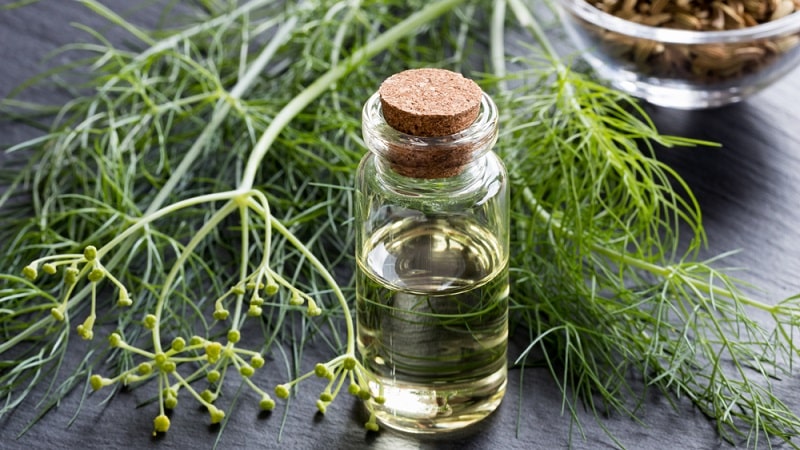
Dill seeds are used for:
- treatment of colic in infants;
- eliminating severe cough;
- eliminating asthma attacks;
- treatment of cholelithiasis;
- rejuvenation;
- increasing lactation;
- normalization of pressure.
For treatment, crushed or whole dill seeds are used, which are poured with hot water and infused. Use depending on the type of disease.
Application of dill greens:
- For glaucoma and cataract. A bandage soaked in juice is used as a compress on the eyes. The procedure time is 15-20 minutes.
- To calm the nervous system. Use a decoction of seeds and herbs. Take warm.
- For the treatment of acne. An infusion of dill and rose or sage petals is used.
Dill for beauty
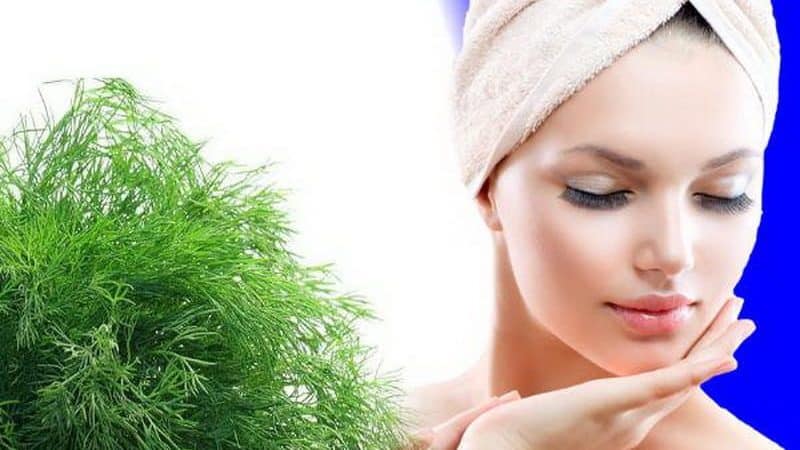
In cosmetology, dill infusion is used as a whitening lotion. It brightens the skin and gets rid of freckles. To prepare it, pour fresh herbs with hot water and leave for about an hour.. This composition is then used as a tonic.
As a remedy for acne, a mixture of dill, white cabbage leaves, onions, garlic and black radish is recommended. Keep the resulting paste on your face for about 20-30 minutes, then wash off with cool water.
For hair, dill is used as a natural shine activator.The rinse is prepared from the greenery of the plant, its seeds, calendula leaves, essential oils of tuberose, cardamom, mint, sandalwood and lemon juice. It is recommended to rinse your hair after each wash.
Dill for weight loss
Dill seeds with the addition of blue clay are used for anti-cellulite wrap. The effect is achieved thanks to essential oils. For 1 serving of clay you will need 50 g of seeds. Result: tightened skin, weight loss and elimination of swelling.
A mixture of plant seeds (1 tbsp.) and flaxseed oil (0.5 tbsp.) is widely used as a scrub against cellulite. It is recommended to use on problem areas 2-3 times a week. The remaining mixture can be stored in the refrigerator.
Dill infusion or essential oil is an excellent bath product that has an anti-cellulite effect. The effect is achieved when using the product every other day. The course of procedures is 3 weeks. Next comes a month break and repeat the course.
Possible harm and contraindications
Despite the fact that dill is a completely natural product, there are a number of contraindications to its use:
- First trimester of pregnancy. Eating dill in large quantities increases the risk of miscarriage.
- Acute stages of inflammation of the gallbladder and pancreas.
- Large bladder stones.
- Hypotension (low blood pressure), as dill has a blood pressure-lowering effect.
- Allergies and intolerance to the product.
Conclusion
Dill is a source of vitamins and minerals for our body. Its use goes far beyond cooking - the healing properties of dill extend to almost all human systems and organs. Discover recipes for beauty and youth, bequeathed by nature itself!